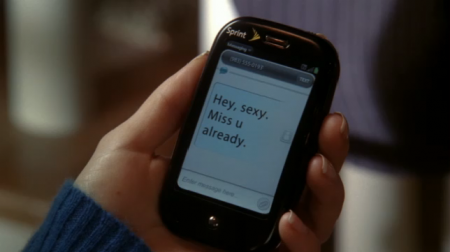Article first published as According to TiVo: Vignettes Helping Maintain TV Viewer Engagement in a DVR World on Technorati.
In a DVR world, who watches commercials? That was the lead-in on one of the slides presented by Greg DePalma, Vice President of Audience Insights at TiVo. Indeed, fast forwarding with your DVR remote is now as commonplace as skipping a b-side quality song on your favorite CD.
I met up with Greg at the Big Data Innovation conference here in San Francisco, hosted by the IE Group. TiVo, at the helm of the DVR revolution, knows quite a bit about viewer engagement, as well. The company uses a national sample of 2 million homes where they track viewing patterns second-by-second, evaluating program and commercial ratings. Additionally, they have panel of 45,000 opt-in users they work with to drill deeper into analysis.
The advent and proliferation of the DVR has created a problem for advertisers. The graph below demonstrates the massive drop in viewership between programming and commercials in a recent TiVo study.
“Neilson ratings the way they are, are not really measuring the bottom dip,” Greg explains. “If there’s some part of a commercial in the unit of a minute, they count it.” What this means, is brands are not really getting what they’re paying for, and they need to figure out creative ways to combat it.
So how are advertisers dealing with this weakened viewer engagement? Greg cites vignettes as one solution. Vignettes are blurring the difference between a TV show and a TV commercial by merging the two. Kind-of like the way Saturday Night Live blurs where the show stops and the ad starts in its commercial spoofs after the opening of it’s show.
In Greg’s example, Sprint created a “Desperate Housewives” vignette incorporate the same setting and narration elements of the show (click image below for YouTube clip).
By weaving program elements into ad breaks, advertisers and networks are making viewers less eager to channel surf or fast-forward. According to TiVo, it’s working. The Desperate Housewives vignettes produced a brand integration lift of 30% across 15 commercials, for an estimated added value of $1 million. The practice is effective because it relates to viewers within the television property they already know and love.
Advertisers around the “Mad Men” series did the same thing, but in the middle of the commercial break. Unilever used the second episode in the fourth season of show to push its “Suave”-themed ad. The fit was a good one for Unilever, in a natural fit to showcase its iconic brands and celebrate their heritage on a relevant hit show. Consumers are craving nostalgia, and the brand was able to play on that, generating a 36% increase in commercial ratings versus an average ad.
There is a downside for advertisers, however. Because vignette ads are tied closely to a particular entertainment property, they result in commercials that really can’t air anywhere else other than the show for which they were designed.
The offset of this is that social media is giving ads additional life. “Ads travel well by social media,” Greg said. TiVo’s studies from the 2012 SuperBowl game showed 56% of smartphone owners saying they would likely tweet or post updates during the game. In the same study, 18% surveyed said they planned to watch the commercials on their computing devices after the game.
Those statistics translate to television commercials, like these vignettes, that are engaging to begin with. Even after a couple months, engaging ads remained talked about online via social media sharing.




4 Comments
Comments are closed.